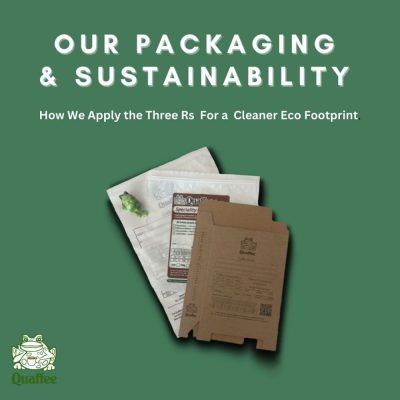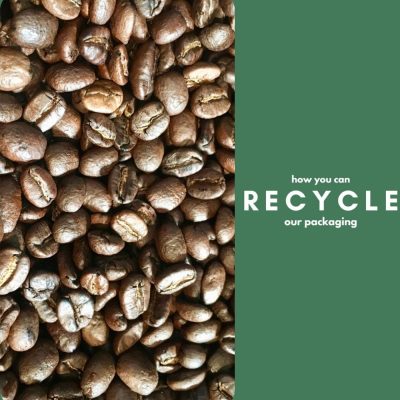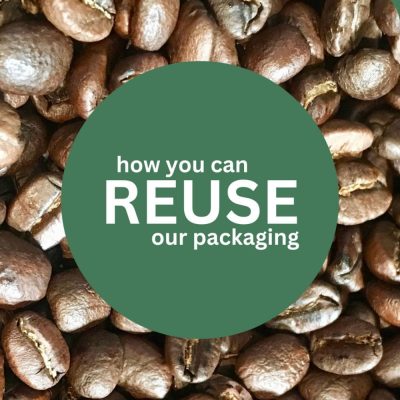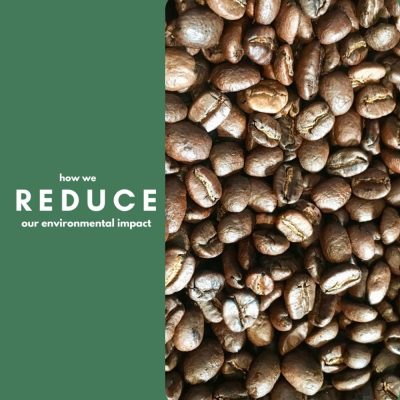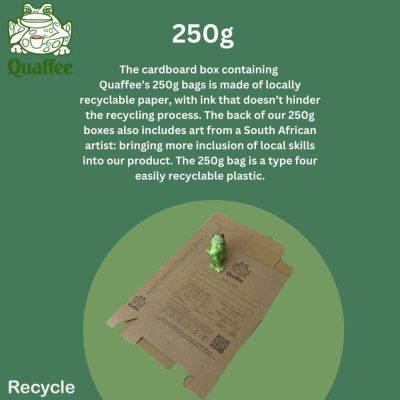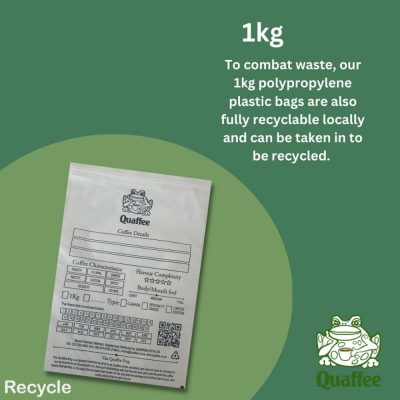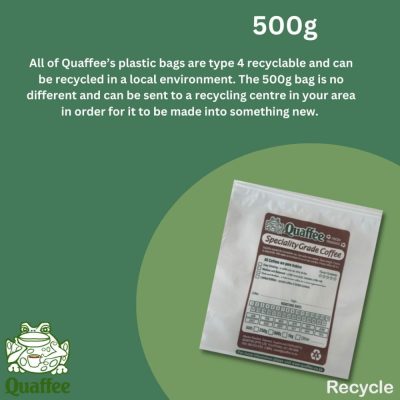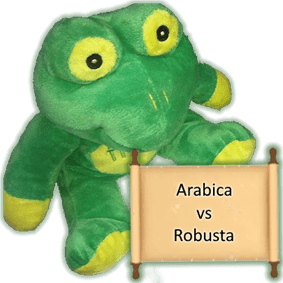In the coffee industry, there are many standards that have just been blindly accepted. However, at Quaffee, we believe in experimenting and thinking outside the box. When it came to packaging our fresh roasted coffee, we decided to put various packaging options to the test.
Testing for Freshness
To find the best packaging for our coffee, we performed several tests using the packaging available in South Africa. Specifically, we were concentrating on coffee bean freshness. Our methodology was to take fresh roasted coffee and then, in a blind taste test, taste that freshly roasted coffee against the coffees we had stored in the various packaging options. We used a panel made up of coffee people, wine people and novices. Each week, we used freshly roasted coffee that had rested for 24 hours as a base for tasting the coffees. After mixing the brewed coffees up, we excluded any that more than 70% of the panellists agreed tasted different.
The Packaging We Tested
The packaging options we tested included a craft bag (brown or white paper) with a wax or plastic coating and a tin tie to seal, a vacuum or valve-based bag that is a triple-layered bag with foil and two plastics, a low-cost reusable plastic container (like a margarine tub), and our sample medical-grade poly-prop bag with a zip lock.
Results: The Medical-Grade Bag is the Winner
After tasting coffee at varied ages and comparing it to the freshly roasted coffee as a base, we found that the medical-grade poly-prop-based packing was a winner. In most cases, this packaging met or exceeded expectations for the storage of the coffee. The best performer was the reusable plastic container, with the medical-grade zip-lock bag coming in second. We excluded the coffee in the triple-layered bag after 6 weeks. Moreover, our freezer testing disclosed that the triple-laminated bags did not perform well and should never be used in a freezer. With the medical-grade zip-lock bags, we could extend the life of the coffee to about 2.5 months until cupping the coffee found a difference.
As a guide, grading authorities classify coffee as a food item that maintains its consumable state for up to a year after production (or roast). Our packaging met this standard.
Locally Made Packaging
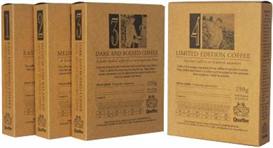
Quaffee is committed to supporting local suppliers and manufacturers, and its packaging is no exception. In the test, we used samples from a local supplier that mainly supplies pharmacies. These bags are locally made near Atlantis, with South African plastic. We contacted them and asked if they would manufacture for us. We had to order 30,000 of the small bags and 15,000 of the other sizes, which we did. The bags are a type 4 recyclable polyprop. Please recycle them, or return them, and we will recycle them (or reuse them for you).
We performed a number of tests using the packaging available in South Africa. Specifically, we were concentrating on coffee bean freshness.
After tasting coffee at varied ages and comparing it to the fresh roasted coffee as a base, we found that the medical grade poly-prop based packing, that we now use, was a winner. This packaging, in most cases, met if not exceeded expectations on the storage of the coffee. As a guide, coffee is graded as a food item, and it must remain in a consumable state for a year after production (or roast). Our packaging met this standard.
Recyclable Packaging
Quaffee uses type 4 recyclable polypropylene for its packaging, enabling customers to recycle it or return it to the company for recycling or reuse. Moreover, the company shows a strong commitment to promoting sustainable practices and encourages its customers to take part in recycling or returning the packaging.
But what about compostable?
Compostable bags come in two types, the craft and the triple-layered. If wax or plastic is utilized in the packaging, it will decompose into smaller pieces in an aerobic environment. Plastic, unless made from vegetable oil, does not completely degrade, but instead breaks down into smaller pieces (which can end up in local marine life). However, if disposed of in the bin, it will end up in a non-aerobic landfill. This means it never breaks down. So, we did not test these, as they are effectively the same as the packaging we did test.
Also, worth considering is home compostable or industrially compostable. All the bags that claimed to be compostable, we found, were industrially compostable.
Conclusion
In conclusion, Quaffee’s locally-made packaging is the most effective way to keep coffee beans fresh for an extended period. The packaging is made from type 4 recyclable polypropylene and is locally made in South Africa. The company encourages its customers to recycle or return the packaging for recycling or reuse, making it environmentally friendly. By investing in locally made packaging, Quaffee supports local suppliers and manufacturers, which is a significant selling point for the company.


